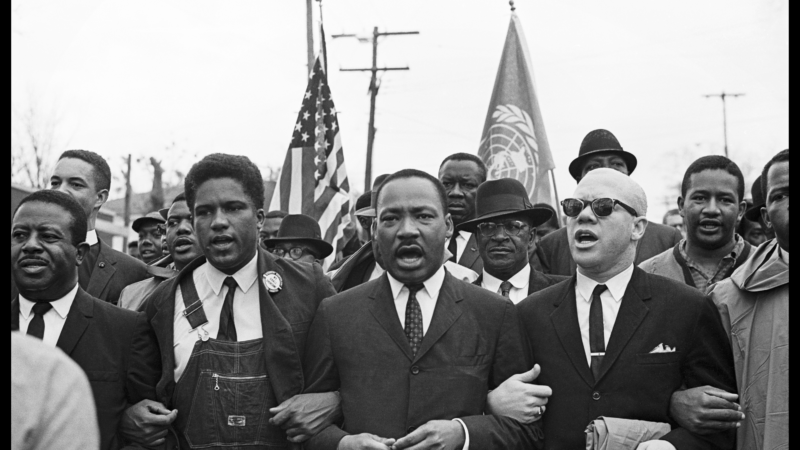Newly restored photos show the ruin of ‘Bloody Sunday’ in Selma on its 60th anniversary
A woman laid out in the street, unconscious. Troopers lined up, armed with batons. A telegram from Massachusetts reacting to the violence.
As a twentysomething freelance journalist at the Birmingham News, James “Spider” Martin was tasked with capturing these moments with his camera, after state troopers shot and killed civil rights activist Jimmie Lee Jackson in Marion, Ala.
His death led to protests that went on for weeks, and culminated on March 7, 1965. That day became known as “Bloody Sunday,” when activists attempted to peacefully march across the Edmund Pettus Bridge in Selma, while on their way to Montgomery, the state’s capital. They were confronted by law enforcement, who attacked 600 of the protesters using billy clubs and tear gas.
Martin snapped thousands of pictures in the days after Jackson’s death, several of which gained national prominence and helped raise Americans’ awareness of the calamities of the 1960s civil rights movement.
Much of his archive from those monumental Selma protests have been newly restored and is now on display at The Montgomery Museum of Fine Arts, in time for the 60th anniversary of Bloody Sunday. The images are also being commemorated in a book, Selma Is Now.
“Bloody Sunday changed my father, both as a man and human being, and it opened his eyes to the depth of the struggle for equal rights for African Americans in a profoundly urgent way,” his daughter, Tracy Martin, says in the book. “It was during that terrifying day at that bridge that he dedicated himself to covering the march for the duration, however long it took.”




(Spider Martin | Briscoe Center for American History)






(Spider Martin | Briscoe Center for American History)

Russia sends 3 Iranian satellites into orbit, report says
The report said that a Russian rocket sent the satellites on Sunday from a launchpad in eastern Russia.
Viral global TikToks: A twist on soccer, Tanzania’s Charlie Chaplin, hope in Gaza
TikToks are everywhere (well, except countries like Australia and India, where they've been banned.) We talk to the creators of some of the year's most popular reels from the Global South.
This painting is missing. Do you have it?
An important work from a rediscovered artist has been absent from public view since the 1970s. A New York curator is hunting for it.
Memory loss: As AI gobbles up chips, prices for devices may rise
Demand for memory chips currently exceeds supply and there's very little chance of that changing any time soon. More chips for AI means less available for other products such as computers and phones and that could drive up those prices too.
Brigitte Bardot, sex goddess of cinema, has died
Legendary screen siren and animal rights activist Brigitte Bardot has died at age 91. The alluring former model starred in numerous movies, often playing the highly sexualized love interest.
For Ukrainians, a nuclear missile museum is a bitter reminder of what the country gave up
The Museum of Strategic Missile Forces tells the story of how Ukraine dismantled its nuclear weapons arsenal after independence in 1991. Today many Ukrainians believe that decision to give up nukes was a mistake.









